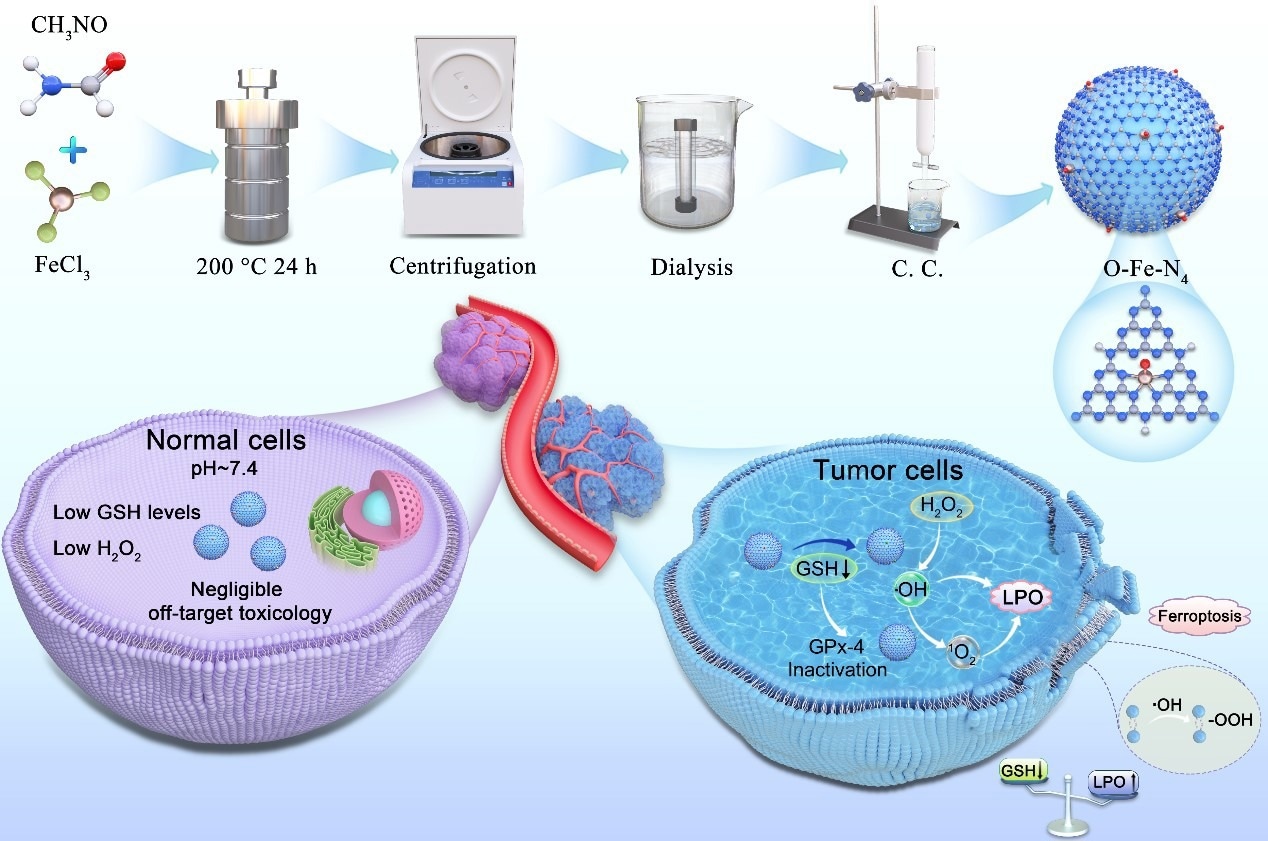Reviewed by Lexie CornerAug 6 2024
A research team led by Prof. Hui Wang of the Hefei Institutes of Physical Science, Chinese Academy of Sciences, has developed an axial O atom-modulated Fe-N4 nanozyme. This nanoenzyme efficiently catalyzes the H2O2 Russell reaction to produce singlet oxygen (1O2) in a hypoxic environment without external stimulation. This study was published in Advanced Science.
 Figure: Synthetic strategy of O-Fe-N4 SAEs for enhanced cascade catalytic 1O2-induced therapy. Image Credit: LIU Hongji
Figure: Synthetic strategy of O-Fe-N4 SAEs for enhanced cascade catalytic 1O2-induced therapy. Image Credit: LIU Hongji
Despite challenges such as overexpressed redox species, hypoxic tumor microenvironments, and the need for invasive external stimulation, 1O2-elevated techniques show promise in limiting malignant tumor growth. Russell-type chemodynamic treatment (CDT) offers an oxygen-independent method for producing 1O2, reducing damage to normal tissues.
Traditionally, CDT has used Cu- and Mo-based nanomaterials due to the inert nature of other materials. Single-atom enzymes (SAEs) with uniform active sites and customizable electronic structures offer a potential solution, but their symmetric electron distribution often results in inadequate catalytic activity.
To address this, researchers designed a novel SAE with an axial O atom-engineered Fe-N4 structure. Density functional theory simulations showed that the axial O atom shifts the d-band center of the Fe-N4 site towards the Fermi level, reducing activation energy and enhancing 1O2 selectivity and production efficiency. The five-coordinated O-Fe-N4 structure demonstrated significant catalytic activity.
The O-Fe-N4 nanozyme exhibited remarkable self-cascade enzymatic performance, mimicking glutathione oxidase and acting as an inducer of reactive oxygen species (ROS), thereby preventing ROS depletion.
In both in vitro and in vivo studies, the nanozyme effectively reduced triple-negative breast cancer cell growth through lipid peroxidation and decreased glutathione peroxidase 4 activity.
According to the scientists, the O-Fe-N4 SAEs not only overcome the limitations of traditional 1O2-elevated tumor treatments but also provide valuable insights into the superior catalytic efficiency of Fe-N4 catalysts.
Journal Reference:
Liu, H., et. al. (2024) Axial O Atom-Modulated Fe(III)-N4 Sites for Enhanced Cascade Catalytic 1O2-Induced Tumor Therapy. Advanced Science. doi:10.1002/advs.202307254